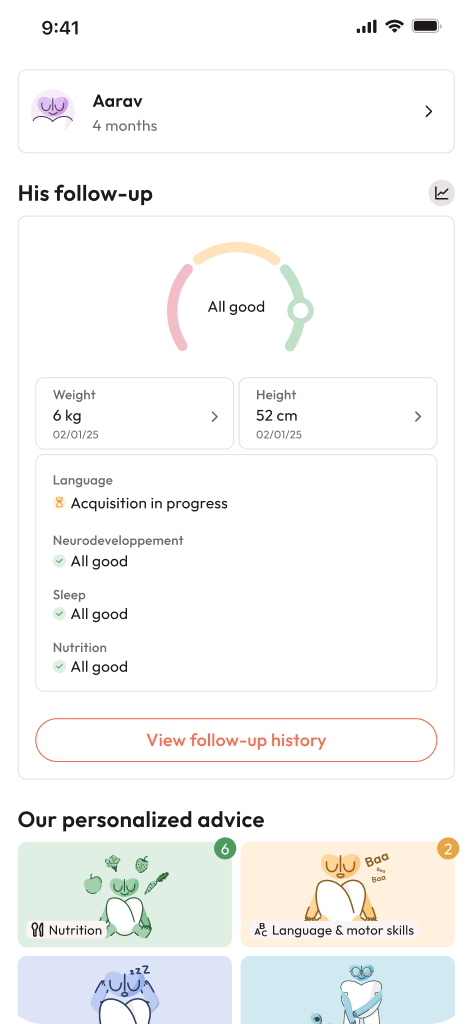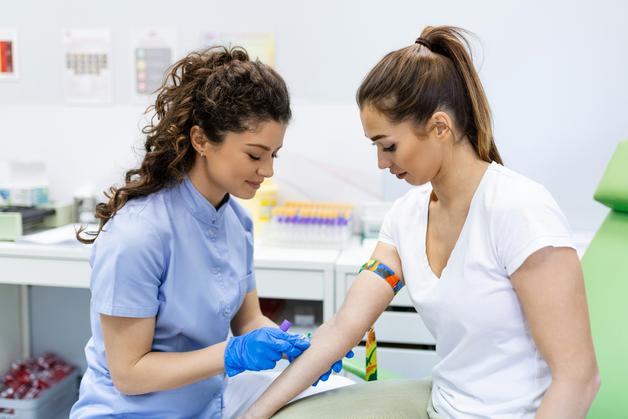An often-unspoken visitor during pregnancy, vulvar varices during pregnancy can take even well-prepared parents by surprise. The image of swollen, twisting veins appearing on the vulva might sound alarming at first glance—but is it really a sign of something severe? Or could it merely be another of nature’s quirks as your body adapts to the remarkable journey of nurturing new life? Many wonder: why do these veins swell, sometimes ache, and linger for weeks? Does normal life, from gentle movement to intimacy, need to halt? Let’s explore all the practicalities: the what, the why, and above all, the how—of recognising, soothing, and managing vulvar varices during pregnancy with confidence drawn from medical evidence and daily realities.
What Exactly Are Vulvar Varices During Pregnancy?
Vivid, tangible, and sometimes striking in appearance, vulvar varices during pregnancy refer to abnormal enlargement of the veins in the vulva region, especially across the labia majora and minora. Picture bluish or purplish vessels—twisted, rope-like, occasionally lumpy, and generally soft to touch. Most often, these emerge around the fifth month of gestation, peaking in the third trimester, especially if this is not your first pregnancy.
A Network Apart: Not Like Other Varicose Veins
While many are familiar with varicose veins in the legs, here the story turns. Vulvar veins—drained by the pudendal network—are extraordinarily sensitive to pelvic blood flow fluctuations and shifts in hormone levels. Pregnancy ramps up circulating blood and dramatically relaxes the vessel walls, making them susceptible in ways leg veins simply are not. Notably, vulvar varices during pregnancy may accompany pelvic venous congestion or appear alongside varicosities in the lower limbs, sometimes blurring the boundaries between isolated vulvar symptoms and wider pelvic congestion.
Cysts or Pelvic Congestion: How to Tell?
Is this new lump a varicose vein or something else altogether? Vulvar varices appear as compressible, winding veins—bluish, never hard, and usually more pronounced after standing. Cysts such as Bartholin’s, on the other hand, possess a firm, rounded profile, unrelated to veins and typically not bluish. Deeper inside, pelvic congestion syndrome involves tortuous pelvic veins and might produce chronic, often dull, pelvic pain—sometimes even in the absence of visible vulvar changes.
How Common Are Vulvar Varices During Pregnancy? Should You Worry?
Research consistently points to an occurrence frequency of 10–20% in pregnant women—yet embarrassment or lack of awareness often keeps these veins in the shadows. They’re more likely if pregnancies are recurrent, often run alongside pelvic varicose veins, and, for most mothers, fade away almost magically within roughly six weeks of delivery. So, the immediate question—are these dangerous? For the overwhelming majority, the answer is a reassuring no.
Science Behind the Swelling: Causes and Risk Factors
- Hormonal Surges: Elevated levels of progesterone and estrogen promote relaxation in the vessel walls—making veins floppy and easy to dilate.
- Added Blood Volume: Pregnancy creates nearly 40% more blood, amplifying pressure in already delicate veins near the pelvis.
- Mechanical Compression: The ever-growing uterus presses on pelvic veins, further slowing blood flow and worsening engorgement.
- Genetic Tendency: Does your family have a history of varicose veins or weak vessel walls? If so, you could be more prone.
- Standing or Sitting for Long Hours: Inactivity or long periods upright both encourage blood to pool, much like in the legs.
- Previous Venous Problems: History of clotting (thrombosis) or previous vein disorders may increase vulnerability.
Why do some experience minimal discomfort while others feel marked heaviness or pain? The interplay of these factors can vary greatly, and sometimes, the distribution of pelvic veins tips the scale.
Recognising Symptoms and Establishing Diagnosis
Most Frequent Symptoms
- Clearly visible, bluish bulging veins or soft “pouches” on the vulva.
- That unmistakable feeling of heaviness, fullness, or burning inside the pelvis.
- Itching, discomfort aggravated by standing, walking, or even intercourse (dyspareunia).
- Sometimes, mild swelling or tenderness—often peaking as the day ends.
- Very rarely, minor bleeding, skin darkening, or a painful hot lump (indicating a blood clot).
How to Know For Sure?
Often, you might spot something unusual during a self-check with a mirror, especially if there’s discomfort. For confirmation, a gynaecologist will likely inspect with you standing up (gravity highlights swelling best). If diagnosis is unclear or pelvic pain is significant, a safe and non-invasive Doppler ultrasound lets doctors visualise blood flow or exclude rare issues like thrombosis.
Impacts on Daily Life and Delivery
Is it safe to remain active or plan a normal vaginal birth? For almost all expectant parents, vulvar varices during pregnancy are more bothersome than risky. Vaginal delivery remains the recommended option, as serious bleeding from these veins during childbirth is exceedingly rare—even when an episiotomy (a small cut) or accidental tear happens. Some may feel nervous about intimacy—discomfort or embarrassment is not unusual, however, communication and taking things slowly often help.
In the few instances where the veins are exceptionally pronounced or seem fragile, doctors may propose a C-section, but such situations are infrequent. Most reassuringly, these varices retreat as circulation normalises, hormones drop, and uterine pressure lifts after birth.
Strategies for Prevention and Everyday Management
Habits to Adopt
- Mix Up Your Movements: Alternate between sitting, standing, walking, and sometimes elevating your hips or legs—gravity really does influence swelling.
- Favour Loose Clothing: Tight pants or underwear are best left aside—choose airy garments so nothing impedes blood return.
- Diet Choices Matter: High-fiber meals, plenty of fruit, vegetables, and hydration minimise constipation and related pelvic pressure.
- Stay Within Weight Targets: Dramatic weight gain strains veins; regular check-ins with your care provider can help tailor advice.
- Gentle Exercise: Activities like walking, prenatal yoga, or swimming keep circulation humming and support vein wall tone.
- Practical Compression: Sometimes, specially-designed maternity support shorts (“pelvic support garments”) or compression tights offer comfort, especially for extended activities.
- Cool Relief: Cold compresses or gentle rinses with cool water bring immediate, if temporary, relief.
Managing Established Vulvar Varices
Respecting the pregnancy context, the emphasis is always non-invasive:
- Lie On Your Side: Especially the left side—this shifts pressure away from large pelvic vessels, improving return.
- Compression Garments: Continued use reduces swelling and discomfort, a staple for many.
- Topical Soothers: Healthcare providers might suggest gentle ointments or vein tonics to diminish itching.
- Natural Options: Extracts like horse chestnut or witch hazel sometimes appear in advice circles, but always double-check with your doctor before using anything herbal.
Paracetamol (acetaminophen) remains the go-to if pain is distracting. NSAIDs (like ibuprofen) are generally avoided during pregnancy unless prescribed by your specialist.
What If Symptoms Persist After Delivery?
Virtually all cases of vulvar varices during pregnancy ease naturally during the postpartum weeks. When lingering veins trouble you months later, providers may turn to:
- Sclerotherapy: Closing off abnormal veins with targeted injections.
- Embolisation: Blocking problematic veins using minimally invasive techniques.
- Rarely, Surgery: Reserved for select, persistent cases where day-to-day life is truly impacted.
Repeat pregnancies predictably bring a higher recurrence risk, so preventative strategies remain wise for those with a known predisposition.
Emotional Wellbeing, Intimacy, and Support
Physical relief is only part of the story. Many feel uncomfortable broaching such a personal issue, but your comfort—and peace of mind—matter every bit as much as physical relief. Open discussions with a trusted practitioner can shape a management plan fitted precisely to your needs. For those worried about intimacy, consider slow, communicative approaches, experimenting gently with comfort measures. Support groups, whether in-person or online, can transform a sense of isolation into understanding camaraderie.
Potential Complications: What Should Parents Monitor?
- Thrombosis: New, intense pain, redness, warmth, or a hard, swollen lump—especially if hot to touch—requires swift medical review.
- Bleeding: Mild bleeding may follow childbirth or trauma; significant bleeding is rare but must be addressed quickly.
- Skin Changes: Extended swelling could sometimes cause pigment changes or even ulceration.
- Chronic Pelvic Pain: Persistent aching post-delivery might indicate underlying pelvic congestion syndrome—occasionally needing advanced interventions.
When and Why to Consult Your Provider
If you experience a rapid shift—sudden pain, swelling, new red or warm areas on the vulva, or unexplained bleeding—reach out without delay. Even mild discomfort, if persistent or troubling, deserves guidance. Routine prenatal visits present an excellent opportunity: enquire about which garments might help, ask for demonstrations, or discuss any unusual sensations you’ve experienced.
Advocate for your own comfort: each parent’s journey with vulvar varices during pregnancy is unique, and tailor-made solutions exist—whether it’s modifying activities, embracing new comfort routines, or, after pregnancy, discussing interventions.
Key Takeaways
- Vulvar varices during pregnancy are a frequent, natural response to major physiological changes—mainly hormonal and mechanical—especially from the second trimester onwards.
- The hallmark symptoms: bluish, swollen veins, sensations of heaviness, itching, or aching, often intensifying after prolonged standing or physical activities.
- Clinical diagnosis is typically straightforward; Doppler ultrasound helps exclude rare, serious complications or deeper pelvic involvement.
- Conservative management is the norm: regular movement, comfortable clothing, weight control, compression, and sometimes topical soothers.
- Most cases resolve spontaneously after childbirth, while persistent varices often respond to minimally invasive treatments.
- Prioritising everyday comfort, emotional wellbeing, and a frank relationship with care providers supports your journey.
- Should complaints escalate or new symptoms arise, consulting an expert ensures tailored and timely solutions.
Wherever you are in your journey—pregnant, postpartum, or planning ahead—reliable resources exist. Explore the application Heloa to access tailored advice, free child health questionnaires, and continued support from medical professionals.
Questions Parents Ask
Can vulvar varices remain after delivery?
Usually, vulvar varices during pregnancy diminish or fully disappear within several weeks post-childbirth as hormone levels and uterine size return to baseline. In rare instances, veins might remain longer. If symptoms are bothersome or if veins don’t resolve after a few months, discuss further evaluation and options with your healthcare specialist—it’s entirely reasonable to seek ongoing comfort.
Which treatments are safe for vulvar varices during pregnancy?
During pregnancy, approaches focus first on symptom easing and safety. Supportive underwear, pelvic elevation, rest breaks, avoidance of standing too long, local soothing, and topical treatments are frontline measures. If symptoms ever escalate, your doctor can adjust the plan. Interventions like sclerotherapy or minor procedures are generally reserved for after delivery but can be tailored if future pregnancies are planned.
Is itching or persistent discomfort normal with vulvar varices?
Yes, it’s quite typical—especially on long days, after lots of standing, or even with movement. Cool compresses, loose clothing, and leg elevation often soothe this discomfort sharply. If itching, aching, or swelling interrupts daily life, connect with a provider to explore medically recommended strategies or specialised garments for further relief.









